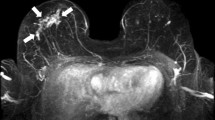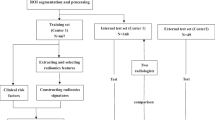Abstract
Due to the low contrast and ambiguous boundaries of the tumors in breast ultrasound (BUS) images, it is still a challenging task to automatically segment the breast tumors from the ultrasound. In this paper, we proposed a novel computational framework that can detect and segment breast lesions fully automatic in the whole ultrasound images. This framework includes several key components: pre-processing, contour initialization, and tumor segmentation. In the pre-processing step, we applied non-local low-rank (NLLR) filter to reduce the speckle noise. In contour initialization step, we cascaded a two-step Otsu-based adaptive thresholding (OBAT) algorithm with morphologic operations to effectively locate the tumor regions and initialize the tumor contours. Finally, given the initial tumor contours, the improved Chan-Vese model based on the ratio of exponentially weighted averages (CV-ROEWA) method was utilized. This pipeline was tested on a set of 61 breast ultrasound (BUS) images with diagnosed tumors. The experimental results in clinical ultrasound images prove the high accuracy and robustness of the proposed framework, indicating its potential applications in clinical practice.

ᅟ















Similar content being viewed by others
References
Mustra M, Grgic M, Rangayyan RM (2016) Review of recent advances in segmentation of the breast boundary and the pectoral muscle in mammograms. Med Biol Eng Comput 54(7):1003–1024. https://doi.org/10.1007/s11517-015-1411-7
Anitha J, Peter JD (2015) Mammogram segmentation using maximal cell strength updation in cellular automata. Med Biol Eng Comput 53(8):737–749. https://doi.org/10.1007/s11517-015-1280-0
Chang RF, WJ W, Moon WK, Chen DR (2005) Automatic ultrasound segmentation and morphology based diagnosis of solid breast tumors. Breast Cancer Res Treat 89(2):179–185. https://doi.org/10.1007/s10549-004-2043-z
Drukker K, Giger ML, Horsch K, Kupinski MA, Vyborny CJ, Mendelson EB (2002) Computerized lesion detection on breast ultrasound. Med Phys 29(7):1438–1446. https://doi.org/10.1118/1.1485995
Joo S, Yang YS, Moon WK, Kim HC (2004) Computer-aided diagnosis of solid breast nodules: use of an artificial neural network based on multiple sonographic features. IEEE Trans Med Imaging 23(10):1292–1300. https://doi.org/10.1109/TMI.2004.834617
Horsch K, Giger ML, Venta LA, Vyborny CJ (2002) Computerized diagnosis of breast lesions on ultrasound. Med Phys 29(2):157–164. https://doi.org/10.1118/1.1429239
Huang YL, Chen DR (2004) Watershed segmentation for breast tumor in 2-D sonography. Ultrasound Med Biol 30(5):625–632. https://doi.org/10.1016/j.ultrasmedbio.2003.12.001
Gomez W, Leija L, Alvarenga AV, Infantosi AFC, Pereira WCA (2010) Computerized lesion segmentation of breast ultrasound based on marker-controlled watershed transformation. Med Phys 37(1):82–95. https://doi.org/10.1118/1.3265959
Boukerroui D, Basset O, Guerin N, Baskurt A (1998) Multiresolution texture based adaptive clustering algorithm for breast lesion segmentation. Eur J Ultrasound 8(2):135–144. https://doi.org/10.1016/S0929-8266(98)00062-7
Huang QH, Lee SY, Liu LZ, MH L, Jin LW, Li AH (2012) A robust graph-based segmentation method for breast tumors in ultrasound images. Ultrasonics 52(2):266–275. https://doi.org/10.1016/j.ultras.2011.08.011
Huang YL, Jiang YR, Chen DR, Moon WK (2007) Level set contouring for breast tumor in sonography. J Digit Imaging 20(3):238–247. https://doi.org/10.1007/s10278-006-1041-6
Li C, Xu C, Gui C, Fox MD (2010) Distance regularized level set evolution and its application to image segmentation. IEEE Trans Image Process 19(12):3243–3254. https://doi.org/10.1109/TIP.2010.2069690
Madabhushi A, Metaxas DN (2003) Combining low-, high-level and empirical domain knowledge for automated segmentation of ultrasonic breast lesions. IEEE Trans Med Imaging 22(2):155–169. https://doi.org/10.1109/TMI.2002.808364
Liu X, Huo Z, Zhang J (2006) Automated segmentation of breast lesions in ultrasound images. In: 27th Annual International Conference of the IEEE-EMBS, pp 7433–7435
Shan J, Cheng HD, Wang Y (2012) Completely automated segmentation approach for breast ultrasound images using multiple-domain features. Ultrasound Med Biol 38(2):262–275. https://doi.org/10.1016/j.ultrasmedbio.2011.10.022
Xian M, Zhang Y, Cheng HD (2015) Fully automatic segmentation of breast ultrasound images based on breast characteristics in space and frequency domains. Pattern Recogn 48(2):485–497. https://doi.org/10.1016/j.patcog.2014.07.026
Zhu L, Fu CW, Brown MS, Heng PA (2017) A non-local low-rank framework for ultrasound speckle reduction. In: 2017 I.E. Computer Society Conference on Computer Vision and Pattern Recognition (CVPR’17), PP 5650–5658
Yu Y, Acton ST (2002) Speckle reducing anisotropic diffusion. IEEE Trans Image Process 11(11):1260–1270. https://doi.org/10.1109/TIP.2002.804276
Cardoso FM, Matsumoto MM, Furuie SS (2012) Edge-preserving speckle texture removal by interference-based speckle filtering followed by anisotropic diffusion. Ultrasound Med Biol 38(8):1414–1428. https://doi.org/10.1016/j.ultrasmedbio.2012.03.014
Flores WG, Pereira WCA, Infantosi AFC (2014) Breast ultrasound despeckling using anisotropic diffusion guided by texture descriptors. Ultrasound Med Biol 40(11):2609–2621. https://doi.org/10.1016/j.ultrasmedbio.2014.06.005
Zhu L, Wang W, Qin J, Wong KH, Choi KS, Heng PA (2017) Fast feature-preserving speckle reduction for ultrasound images via phase congruency. Signal Process 134:275–284. https://doi.org/10.1016/j.sigpro.2016.12.011
Mittal D, Kumar V, Saxena SC, Khandelwal N, Kalra N (2010) Enhancement of the ultrasound images by modified anisotropic diffusion method. Med Biol Eng Comput 48(12):1281–1291. https://doi.org/10.1007/s11517-010-0650-x
Otsu N (1979) A threshold selection method from gray-level histograms. IEEE Trans Syst Man Cybern 9(1):62–66. https://doi.org/10.1109/TSMC.1979.4310076
Chan TF, Vese LA (2001) Active contours without edges. IEEE Trans Image Process 10(2):266–277. https://doi.org/10.1109/83.902291
Loizou CP, Pattichis CS, Pantziaris M, Tyllis T, Nicolaides A (2007) Snakes based segmentation of the common carotid artery intima media. Med Biol Eng Comput 45(1):35–49. https://doi.org/10.1007/s11517-006-0140-3
Mumford D, Shah J (1989) Optimal approximations by piecewise smooth functions and associated variational problems. Commun Pure Appl Math 42(5):577–685. https://doi.org/10.1002/cpa.3160420503
Li C, Xu C, Gui C, Fox MD (2005) Level set evolution without re-initialization: a new variational formulation. In: 2005 I.E. Computer Society Conference on Computer Vision and Pattern Recognition (CVPR'05), pp 430–436
Fjortoft R, Lopes A, Marthon P, Cubero-Castan E (1998) An optimal multiedge detector for SAR image segmentation. IEEE Trans Geosci Remote Sens 36(3):793–802. https://doi.org/10.1109/36.673672
Rodrigues R, Braz R, Pereira M, Moutinho J, Pinheiro AM (2015) A two-step segmentation method for breast ultrasound masses based on multi-resolution analysis. Ultrasound Med Biol 41(6):1737–1748. https://doi.org/10.1016/j.ultrasmedbio.2015.01.012
Xu X, Niemeijer M, Song Q, Sonka M, Garvin MK, Reinhardt JM, Abràmoff MD (2011) Vessel boundary delineation on fundus images using graph-based approach. IEEE Trans Med Imaging 30(6):1184–1191. https://doi.org/10.1109/TMI.2010.2103566
Huang YL, Chen DR, Jiang YR, Kuo SJ, Wu HK, Moon WK (2008) Computer-aided diagnosis using morphological features for classifying breast lesions on ultrasound. Ultrasound Obstet Gynecol 32(4):565–572. https://doi.org/10.1002/uog.5205
Wu WJ, Moon WK (2008) Ultrasound breast tumor image computer-aided diagnosis with texture and morphological features. Acad Radiol 15(7):873–880
Moon WK, Chen IL, Chang JM, Shin SU, Lo CM, Chang RF (2017) The adaptive computer-aided diagnosis system based on tumor sizes for the classification of breast tumors detected at screening ultrasound. Ultrasonics 76:70–77. https://doi.org/10.1016/j.ultras.2016.12.017
Elawady M, Sadek I, Shabayek AER, Pons G, Ganau S (2016) Automatic nonlinear filtering and segmentation for breast ultrasound images. In: International conference image analysis and recognition. Springer International Publishing, Switzerland, pp 206–213. https://doi.org/10.1007/978-3-319-41501-7_24
Wu J, Li B, Sun X, Cao G, Rubin DL, Napel S, Ikeda DM, Kurian AW, Li R (2017) Heterogeneous enhancement patterns of tumor-adjacent parenchyma at MR imaging are associated with dysregulated signaling pathways and poor survival in breast cancer. Radiology 285(2):401–413. https://doi.org/10.1148/radiol.2017162823
Wu J, Cui Y, Sun X, Cao G, Li B, Ikeda DM, Kurian AW, Li R (2017) Unsupervised clustering of quantitative image phenotypes reveals breast cancer subtypes with distinct prognoses and molecular pathways. Clin Cancer Res. https://doi.org/10.1158/1078-0432.CCR-16-2415
Wu J, Sun X, Wang J, Cui Y, Kato F, Shirato H, Ikeda DM, Li R (2017) Identifying relations between imaging phenotypes and molecular subtypes of breast cancer: model discovery and external validation. J Magn Reson Imaging. https://doi.org/10.1002/jmri.25661
Wu J, Gong G, Cui Y, Li R (2016) Intratumor partitioning and texture analysis of dynamic contrast-enhanced (DCE)-MRI identifies relevant tumor subregions to predict pathological response of breast cancer to neoadjuvant chemotherapy. J Magn Reson Imaging 44(5):1107–1115. https://doi.org/10.1002/jmri.25279
Ertas G, Doran SJ, Leach MO (2017) A computerized volumetric segmentation method applicable to multi-centre MRI data to support computer-aided breast tissue analysis, density assessment and lesion localization. Med Biol Eng Comput 55(1):57–68. https://doi.org/10.1007/s11517-016-1484-y
Funding
This work is partially supported by grants from the National Natural Science Foundation of China (NSFC: 61401451, 61501444, 61472411), Guangdong Province Science and Technology Plan Projects (Grant No. 2015B020233004), and Shenzhen Technology Research Project (Grant No. JSGG20160429192140681, JCYJ20160429174611494).
Author information
Authors and Affiliations
Corresponding authors
Rights and permissions
About this article
Cite this article
Liu, L., Li, K., Qin, W. et al. Automated breast tumor detection and segmentation with a novel computational framework of whole ultrasound images. Med Biol Eng Comput 56, 183–199 (2018). https://doi.org/10.1007/s11517-017-1770-3
Received:
Accepted:
Published:
Issue Date:
DOI: https://doi.org/10.1007/s11517-017-1770-3




